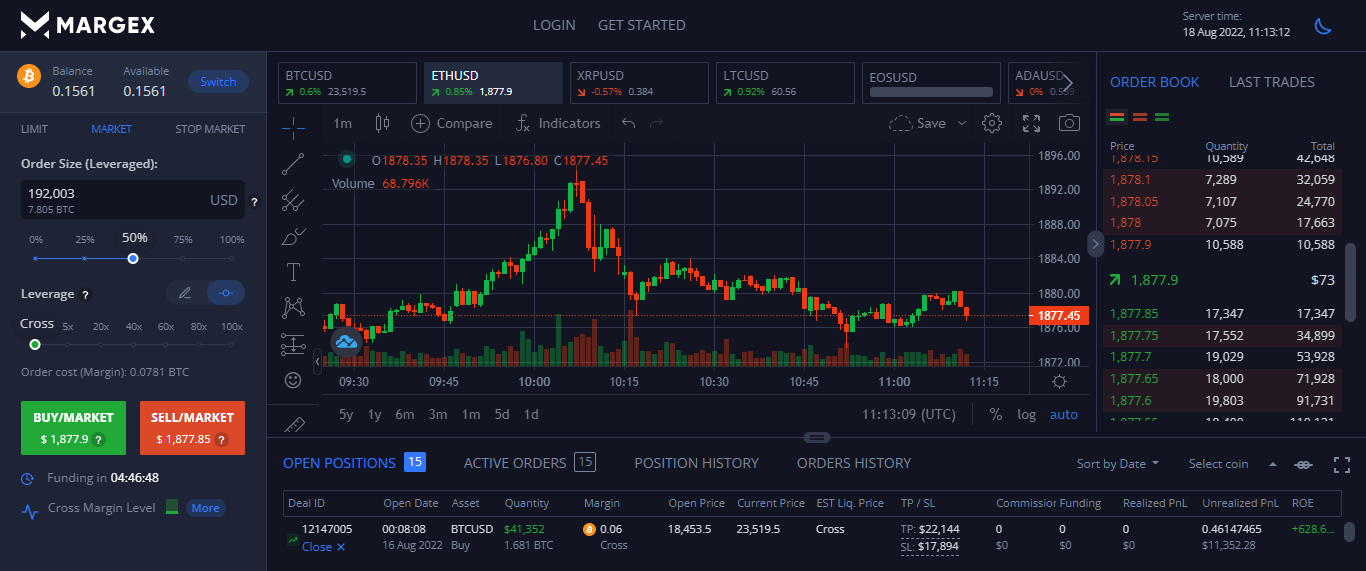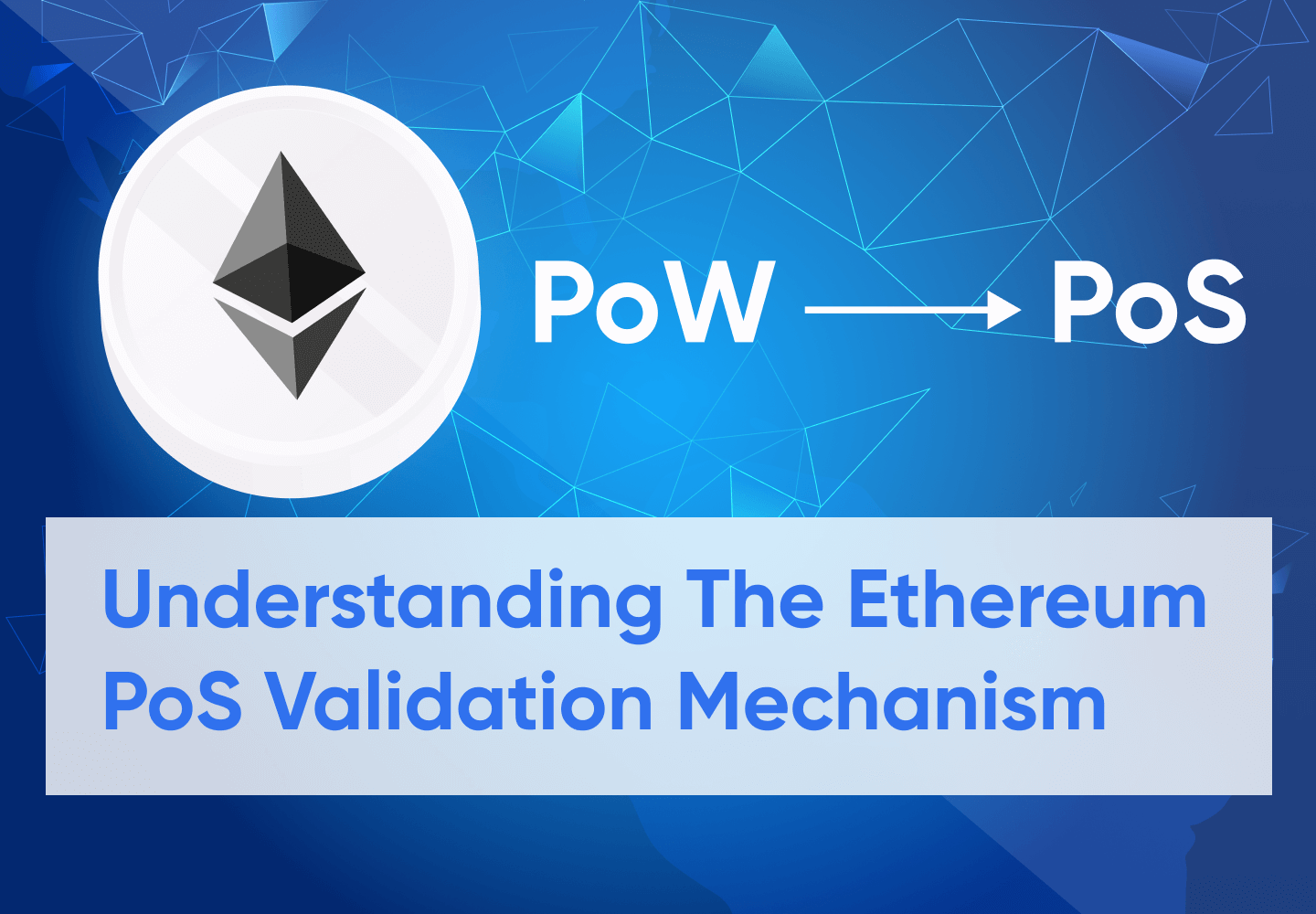The Ethereum community is excited about the upcoming migration from proof-of-work to the more scalable proof of stake consensus mechanism. The Ethereum chain is a hub for many NFT and Defi projects but faces many issues.
Some of these issues became more prominent in 2021. Thankfully, Ethereum developers have been making moves to migrate to a pos consensus. The Ethereum proof of stake upgrade is tagged the “Merge" and is slated to occur in September 2022.
There have been many phases, testnets, and adjustments since the journey began. But finally, the Merge is going to happen. Keep reading to learn more about the new consensus mechanism and how it will affect Ether and crypto investors.
A Brief On The Ethereum Protocol
The Ethereum protocol is an open-source, decentralized network launched in 2015 by Vitalik Buterin. The network facilitates the creation of smart contracts and the development of decentralized applications. No central authority governs Ethereum, and users can transact without restrictions. Every transaction on the Ethereum network is initiated through smart contracts and is verified using the proof-of-work mechanism. Participants get access to immutable transaction records distributed securely across the network.
Developers deploy smart contracts using the Solidity scripting language to run on the Ethereum Virtual Machine EVM. Moreover, the Ethereum blockchain offers four building blocks to enable these operations, including:
- Peer-to-peer networking
- Cryptographic tokens & addresses
- Turing complete virtual machine
- Consensus algorithm.
These technologies enable the initiation and execution of smart contracts to facilitate interaction among participants.
Understanding the Proof-Of-Stake (PoS) Consensus Mechanism.
The proof of stake is a transaction verification mechanism on a crypto network. The consensus mechanism ensures that data on a cryptocurrency network is valid. The validation process depends on the participants called “validators” who have staked their tokens on the network.
Once these transactions are verified as accurate, the system adds them as a new block.
Some benefits of using this mechanism include,
- Supports a large number of validators
- Requires less computational power
- Doesn't require a huge investment in mining equipment
- PoS is more scalable
- Offer more earning opportunities for network participants through staking rewards.
A few of the cryptocurrencies already using the proof of stake consensus mechanism include Cardano (ADA), Solana (SOL), Tron (TRX), EOS, Cosmos (ATOM), Tezos (XTC), and Terra. But very soon, Ethereum will upgrade to the PoS network.
Validators
The participants are responsible for verifying transaction data are called Validators. These validators must stake their tokens on the network to qualify. But some participants can join a staking pool to lock lesser amounts.
Proof-of-stake and network security
Proof of stake network uses a validator node to verify transaction data before adding it as a block on the blockchain. But this responsibility creates an avenue for network participants to exploit the network. That's why the network penalizes validators by withholding rewards when they misbehave.
Also, if validators seem dishonest, exhibiting certain behaviors such as submitting contradicting attestations or proposing many blocks in one slot, the network destroys their stakes. That way, validators are kept in check to ensure network security.
But recently, there have been a lot of arguments that proof of stake might not be as secure as the PoW model. Ethereum has already recorded an incident in the migration process. Many stated that this couldn't have happened in the proof-or-work model.
Proof-Of-Work VS. Proof-Of-Stake, Differences
The proof-of-work and proof-of-stake consensus mechanisms validate transactions on a crypto network. But there are a few things that differentiate them.
- Process
The proof of work validation process requires mining to solve complex mathematical problems. But the proof of stake requires staking, a method of locking funds into the network to become a validator without mining difficulty.
- System requirement
Proof of work comes with enormous computing power and adequate mining hardware requirement for energy-intensive validation. But the proof of stake only requires a specific amount of coins locked on the network.
- Rewards
While the PoW mechanisms reward participants with a new token, the Proof of stake allocates a percentage of the network transaction fees to the validators.
- Competition
Miners in a PoW network usually compete to solve mathematical problems, but an algorithm determines the winner in a proof of stake network based on the stake amount.
- Security
A PoW chain depends on an increased hash to secure the network. But a PoS chain remains secure using the locked crypto assets.
- Exploit
To exploit a PoW network, a hacker will control 51% of computing power, which is impossible. But in a PoS chain, a hacker will need 51% of the total crypto on the network.
What are the risks in using PoS
The risks associated with the proof of stake consensus mechanism is minimal. It only takes a validator who owns 51% of all the assets in the network to exploit it.
But the proof of stake risks lies in those who lock their crypto holdings. Some of the risks they face include,
- Adverse price movement
- Illiquidity of assets
- Extended locking up periods
- Delayed rewards payouts
- Penalties due to dishonesty of a validator node.
- Electricity and hardware costs of running a validator node
- Loss of wallet's private keys leading to loss of staked assets
Ethereum 2.0 How Will It Work?
The Ethereum proof of stake will introduce Staking, Sharding, and the Beacon Chain. The PoS model will replace mining as the difficulty bomb increases. Sharding splits the network’s infrastructure into multiple interconnected pieces to support larger transactions. Then, the Beacon Chain will coordinate validator nodes and keep the shards secured and in sync.
The Beacon Chain will select a group of validators every 12 seconds to designate roles. The group will be 1/32nd of the existing stakers on the chain. One of the validators in the group will act as the “block proposer," while the others will be the "Attesters." While the proposer initiates a block proposal, the attesters will validate it.
Note that a proposer will be selected for every new block created on the network. Also, if any proposer behaves dishonestly, he pays the “Slashing” penalty.
Also, those who stake ETH on the network will receive block rewards and a part of the transaction fees. But the fees burned due to EIP-1559 will be shared equally to the stakers pools, even though the Beacon Chain didn't select them.
Ethereum 2.0, How It All Began
Dating from the beginning of the decentralized network, the need to migrate from the PoW (Proof-of-Work) system has always existed. Therefore, it was already scheduled that the ETH2 upgrade would kick off after the Frontier launch in July 2015.
The arrival of ETH2 it as one of the several upgrade plans of the blockchain’s mainnet, which include;
- Homestead, which took place in March 2016
- Metropolis – Byzantium, which occurred in October 2017
- Metropolis – Constantinople, carried out in February 2019
- And in December 2019, the Istanbul upgrade took place
Out of the previous upgrades, Ethereum 2.0 is the most crucial as it drives implementing the PoS (Proof-of-Stake) consensus mechanism.
The Roadmap To Ethereum 2.0
The ETH2 upgrade is channeled toward making the decentralized network more scalable, efficient, and secure. The Ethereum proof of stake roadmap describes the processes.
Phase 0
This was the launch of the Beacon Chain. It enabled holders to stake their tokens and become validators to earn rewards. The Beacon Chain launched on December 1, 2020, after 16,384 validators successfully staked 32ETH required. At this stage, there were no smart contracts or transactions on the Beacon chain.
Phase 1
The major objective in phase 1 is to split the Ethereum blockchain into 64 shard chains. The shard won’t have a smart contract or transaction support. But validators can create blocks on their chains.
Phase 1.5
Phase 1.5 will make the current Ethereum blockchain a shard in the new ETH2. Based on the proposal, the Proof of Work protocols will be transitioned into The Beacon Chain to become proof of stake.
Phase 2.0
Serenity is the term that expresses phase 2 of the Proof of Stake upgrade. In the serenity phase, the shard chain will be fully functional. As a result, it will be possible to execute mainnet account balances and other transactions. Furthermore, phase 2 of the upgrade is intended to finalize the application of the eWASM virtual machine.
What Is The Ethereum Merge
The Merge is the latest upgrade of the Ethereum network to a PoS consensus mechanism. The upgrade will merge the ETH1/Execution Layer with the ETH2/Consensus Layer (Beacon Chain). Currently, the Ethereum Beacon Chain is a different network that has been running parallel to Ethereum.
Merging both ETH1 and the Beacon Chain will transition the network to a secure, efficient, and eco-friendly proof of stake mechanism. After the merge, the PoW mechanism will get shelved entirely, and the validators will produce new blocks through the Beacon Chain PoS model.
How Will The Merge Impact The Ethereum Network
The merge will change the consensus mechanism of Ethereum. The validators will hold the majority of ETH coins, and there will be a different way of distributing new tokens. This could lead to centralization instead of decentralization, as more tokens will be in the hands of validators.
Also, the merge will solve Ethereum’s scalability issues and reduce energy consumption by 95%. It will also increase the processing speed of transactions. Many players believe that the merge will impact the price of Ethereum tokens.
Why Should Traders Pay Attention To The Merge?
The merge will improve the Ethereum network to scale easily. More transactions will be processed on the network, but the gas fees will not be lower. Also, staking will reduce new coin circulation by 90%. This is because staking rewards are smaller than mining rewards.
The reduction in circulating ETH will affect price positively, as demand will exceed supply. Also, the staking opportunities will increase. Traders can stake their ETH to earn more rewards. According to many industry observers, the upcoming upgrade will also bring more institutional investors to buy ETH, improving the ecosystem in the long run.
What Happens To My Staked Ether On Margex After The Merge?

Margex is an exchange to trade crypto with 100x derivatives leverage at 100,000 TPS. In addition, the exchange gives traders access to a global cryptocurrency market, an easy-to-use UI, and a cross margin on all assets at no hidden commission.
On Margex, you can start with $10 and even initiate a trade size of $1. Moreover, you can use your credit/debit card or crypto, including BTC, wBTC, ETH, USDC, USDT, Link, DAI, and USDP, to make deposits.
Margex will pause deposits and withdrawals of new ETH and ERC-20 tokens during the upcoming upgrade. This pause will be brief to ensure that the system's transition has been reflected. After the upgrade, Margex users will find their ETH2 balance on their Ethereum wallet.
Note that all the staked ETH2 won’t be accessible during the merge. Assets will be locked until the upgrade is complete, meaning users can't transfer or trade with them.
Will ETH Mining Be Profitable In the Proof Of Stake
As soon as the Merge takes place, mining will cease to exist. The validation process will transition from proof of work to proof of stake. Miners will be replaced by validators who don’t need to compete with one another to solve complex mathematical problems.
Also, validators don’t need mining hardware of computational power but 32 ETH tokens to be locked on the network. To make profits, participants will stake their ETH to earn rewards.
What will happen to Ethereum miners’ fees after the upgrade?
As the Merge introduces the proof of stake, miners will no longer add new blocks to the blockchains. As such, they will no longer receive transaction fees on ETH. Instead, the fees will be sent to an inaccessible address.
According to some analysts, miners’ fees will be turned into a "digital ash" that no one can use. The option for miners is to contribute their GPUs to some Web3 protocols such as Akash, Render Network, or Livepeer.
Will Mining Affect ETH Price After The Upgrade?
Ethereum proof of stake will not require mining; as such, it will not affect ETH price. However, the supply of new ETH tokens will reduce so much that demand might exceed supply, thereby pushing prices up.
Also, some industry observers believe that the migration will improve ETH price as it will provide greater liquidity on the network. Besides, it will support multiple NFTs, decentralized applications, and smart contracts, which will improve both Ethereum’s appeal and value in the long run.
Ethereum Proof Of Stake - Conclusion
The Merge between ETH1 and the Beacon Chain is slated to occur in September 2022 after years of updates, improvement, tests, and phases. The migration introduces proof of stake to replace proof of work.
Validators will replace miners and will be required to lock 32 ETH on the Ethereum network to qualify. Participants on the Ethereum network will earn staking rewards. As for the impact on ETH price, the community is optimistic that a reduction in issuance of new ETH will affect prices as demand will exceed supply.
FAQs - Community Asked Questions About The Merge
Find more answers to your questions about the upcoming merge and how it will affect current proof-of-work users.
Is Ethereum using PoW or PoS?
At the moment, Ethereum uses the proof of work (PoW) system. It involves miners adding blocks to the chain by solving mathematical problems. However, there are plans to move to the proof of stake (PoS) system soon. The upgrade will phase out cryptocurrency mining for validators.
When is Ethereum merge taking place?
The community expects it to launch on September 15 or 16, 2022. But the complete features will be made available after 2023. Notably, the Ethereum PoS chain is operational but still in the testing phases.
Does proof of stake need mining?
Proof of stake (PoS) does not require mining. It makes use of a different process called staking. Instead of miners on the chain, you have validators. Staking is simply locking some coins to get rewards. To become a validator, you need to stake 32 ETH.
Reasons PoW is preferable to PoS?
Proof of Work has several advantages over proof of stake. First, it is secure and has been verified as so, given many years of application. Also, it pays rewards in crypto, and its earning potential is high depending on the network.
Will Ethereum 2.0 replace Ethereum?
The project was not designed as a replacement but as an upgrade. Staking will replace mining, but Ethereum will remain the same. It implies that users on the Proof of Work system do not have to upgrade their ETH. Ethereum 2.0 is designed to give users more control over the project.
Do I need 32 ETH to become a validator on Ethereum 2.0?
Ideally, you would need 32 ETH tokens to become a validator. However, there are staking pools that allow users to pool together smaller amounts of ETH. As an individual or as a pool, the stake is fixed at 32ETH.


